Portland Chef and Forager Karl Holl Prepares Forest-Inspired Menus
Through his highly seasonal approach to cooking and the launch of his new business venture, chef and forager Karl Holl shares the experience of foraging the forests of the Pacific Northwest.
Editor’s Note: this story is published in partnership with KCET / PBS SoCal and in association to The Migrant Kitchen, our Emmy-winning documentary series now on its fourth season.
“It starts in the early morning for me,” says chef and forager Karl Holl. “I always try to see the sunrise.”
This means waking up around 5:30 a.m. and departing from his house shortly after with a wicker basket or two, water, snacks and his French bulldog, Coppa.
“It’s usually about an hour-and-a-half-, two-hour cruise out into the mountains,” he continues. “Then I spend anywhere from three to 12 hours in the woods.”
Holl is used to long, physically demanding days. For years, he spent the majority of his waking hours preparing meals for some of the most popular restaurants and dining events in the United States. His hard work earned him recognition, including the title “Chef of the Year” in 2018 by Portland Monthly Magazine, but did not protect him from the hardships suffered by the restaurant industry during the early days of the Covid-19 pandemic. Following the closure of his Portland-based restaurant at the end of 2020, Holl tends more and more to spend his days finding food rather than cooking it.
For Holl, the act of foraging extends beyond the span of a single sunrise to sunset, spreading out over many days of preparations, including checking weather forecasts and paying close attention to subtle seasonal cues and years of experience.
Holl’s knowledge of foraging and his ability to predict when and where he may find mushrooms and other edible wild ingredients is in part based on science.

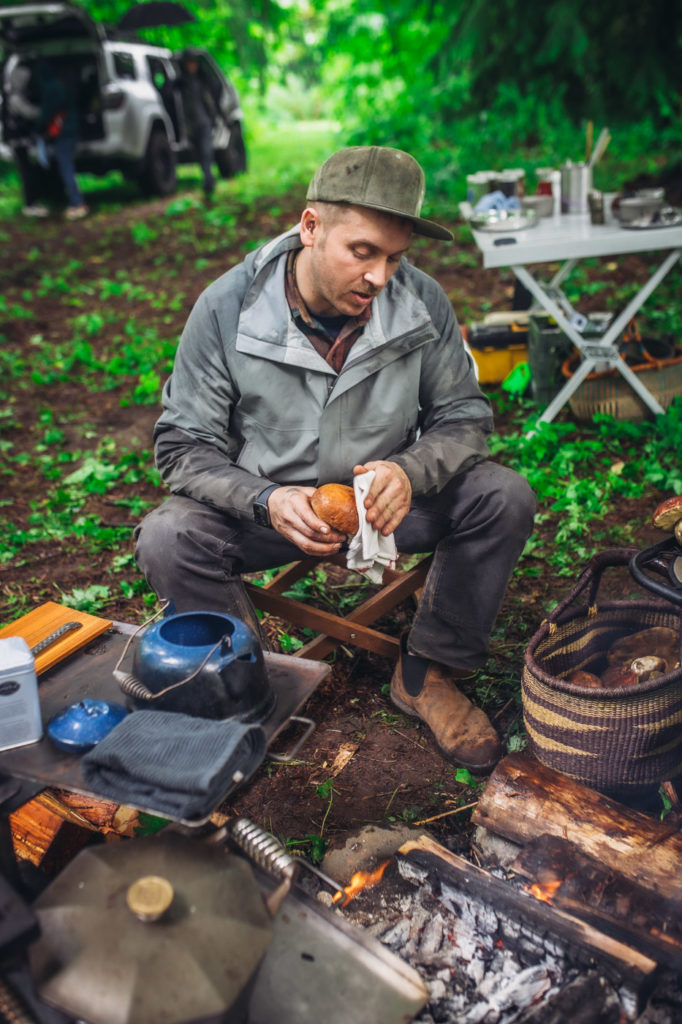
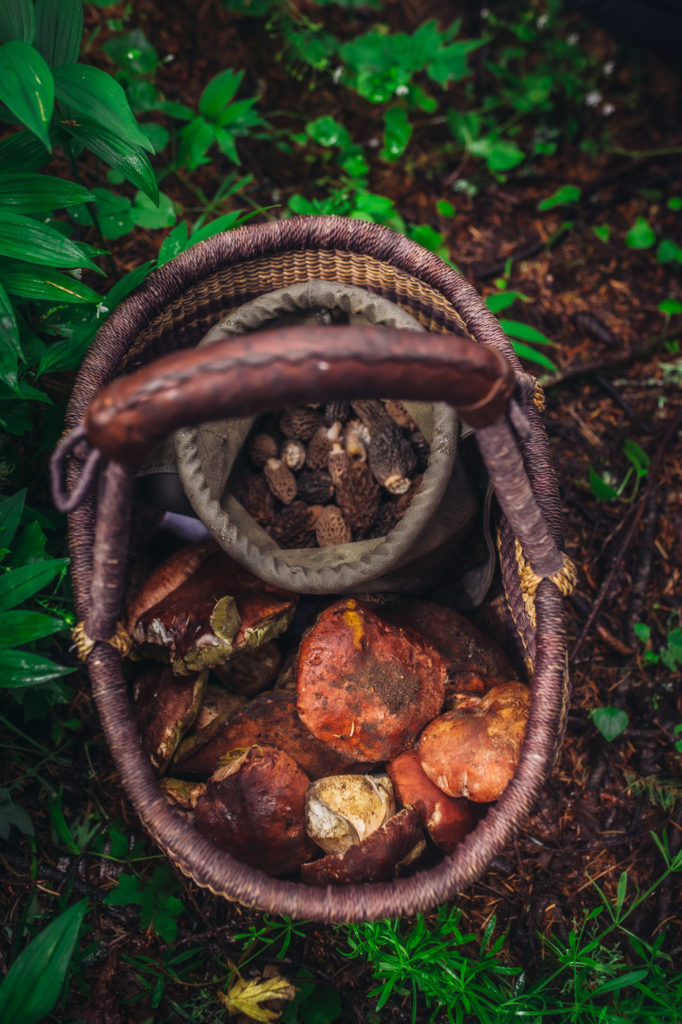
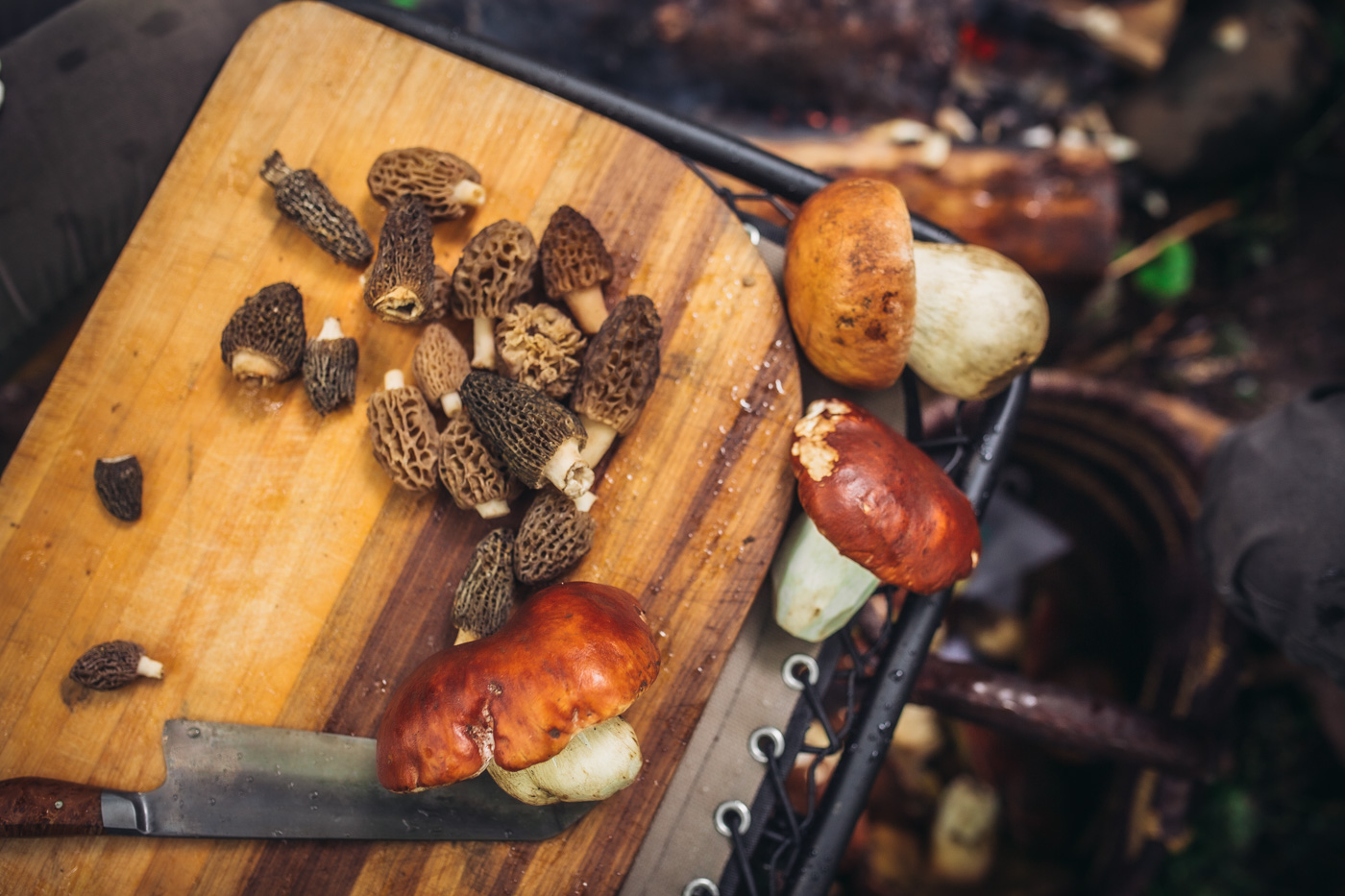
“The ground temperature has to be above 57 degrees for mycelium to start fruiting,” explains Holl. For this reason, a forager’s spring is spent “waiting for the ground temperatures to warm.” This is not to say, however, that Holl spends the season with his eyes focused on a thermometer. Foraging is as much science as it is sensation, and Holl has come to understand how nature communicates without translation into numbers through the medium of man-made tools.
“A lot of senses are triggered in what goes into a day in the woods,” says Holl, who observes the phases of the flowers and other plants growing around his home near Portland, Oregon, to understand what he might discover in the Columbia River Gorge that cuts between Mount Adams in Washington and Mount Hood in Oregon.
“In the springtime, there are lots of indicators,” remarks Holl on knowing at what point mushrooms will begin bursting up through the soil. For example, “the wild orchid bloom coincides with the morels blooming.”
Morels are just one of many prized mushrooms Holl regularly forages, along with porcini, chanterelles and matsutake. “The Pacific Northwest is known for its foraged bounty that’s available almost year-round up here.”
Holl began foraging in 2005 several hundred miles south of where he now spends most of his days, which is several thousand miles from where his interest in food first sprouted.
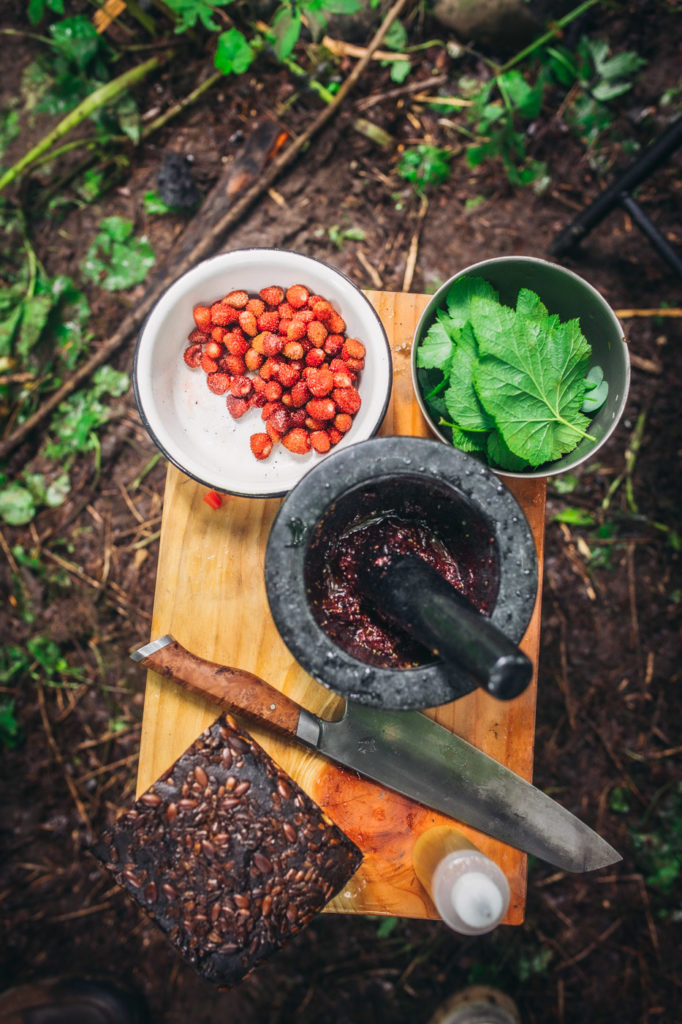
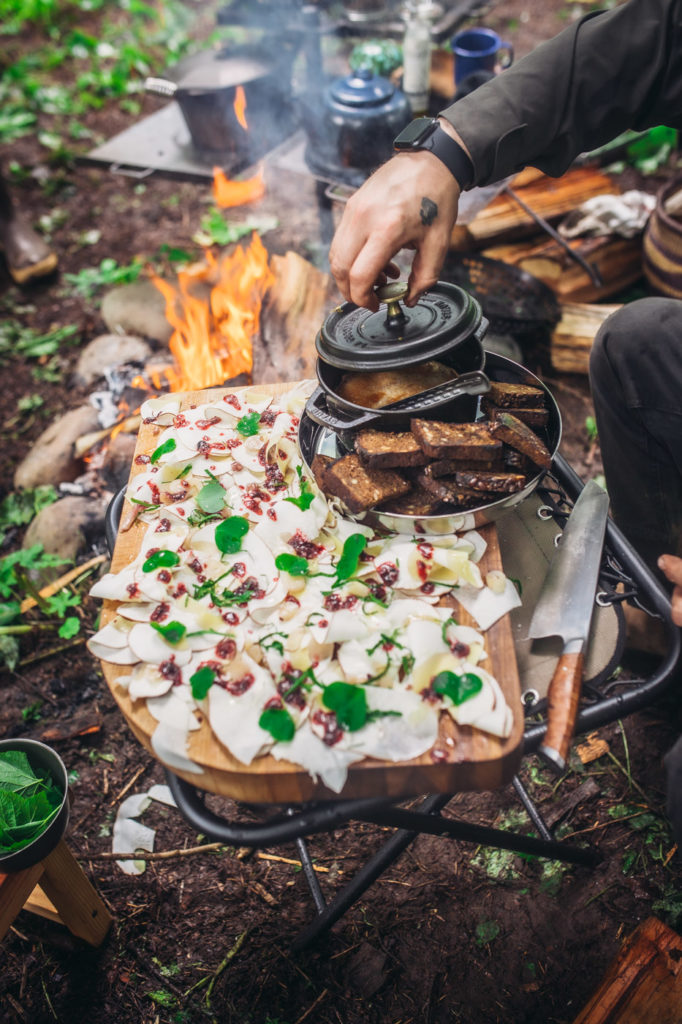
“My grandmother owned a couple of restaurants in my hometown,” says Holl, who grew up in Vermont. “I’ve always been around food. Through high school, I cooked at a diner. And then looking at colleges, I didn’t have a direction other than I really enjoyed cooking.”
He applied to and eventually graduated from the nearby New England Culinary Institute, which led him to take an internship at Martini House (a restaurant in St. Helena, California, that has since closed). Holl explains, “We had a year-round mushroom tasting menu. That’s where I fell in love with mushrooms and foraging.”
He continued to work at Martini House and forage in Northern California with fellow chefs for a few years, followed by a few more years of foraging and cooking in several different states until 2013 when he moved to Oregon with the intention of starting a new culinary and agricultural venture with his brother, Alex.
Holl explains that, as a forager, relocating means “you have to re-learn your surroundings,” and reiterates how formative his time around the Bay Area and working with a “constantly changing” mushroom-centric menu has been to his approach to foraging anywhere.
“That confidence and connection and comfort-ness that comes with being able to [identify mushrooms] comes from years of experience with wild edibles,” says Holl. “I started with the basics, with what I could easily identify, like a golden chanterelle. From there—just like anything you’re curious about—the possibilities run rampant. It’s this evolving education of constant learning.”
Besides learning to identify the mushrooms of the Pacific Northwest at this time, Holl also received an education in growing vegetables and raising animals as he began farming with his brother. The two eventually launched Spätzle & Speck, a catering company committed to using ingredients they grow, raise and forage themselves, or source from local like-minded suppliers.
“It’s been almost 16 years now of having foraged ingredients being introduced into my cooking one way or another,” says Holl. “The way I cook is so seasonal that it’s just natural to take everything that’s around me and preserve it or utilize it in its full potential in that moment—and that’s not just what’s growing in the field or what’s being raised in the pasture, but also what’s in the forest.”
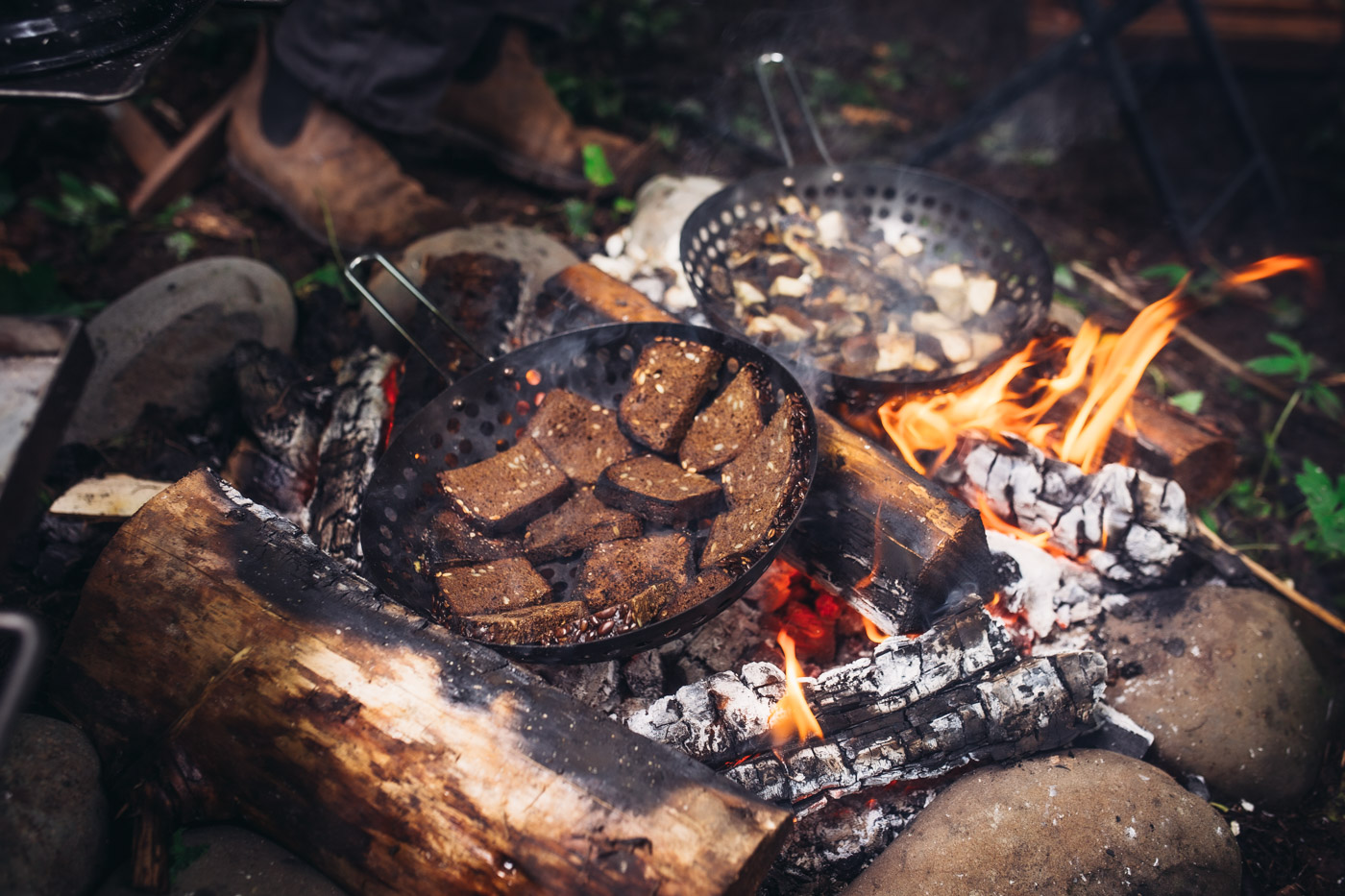
“I look at mushrooms the same way I look at seasonal vegetables,” he continues. “It starts off very delicate and tender in the springtime—the greens like the delicate morels—and it moves to the hardier winter foraged ingredients.”
This way of cooking has earned Holl much attention in and around Portland, especially for his memorable mushroom dishes, like his 100-layer lasagna, which he explains “is indeed 100 layers, but only about 25 layers of pasta, each layer topped with a wild mushroom duxelles I make from a seasonal mushroom mix—usually golden chanterelle and porcini.” Although he continues to offer occasional Spätzle & Speck events and, as of last year, serves as the culinary director at Smith Teamaker devising dishes centered on specialty teas, these days, Holl often spends more time outdoors than in the kitchen.
“A lot of chefs’ and people in general’s lives have changed tremendously in the past few years. For me, I never found myself running back to what I was doing three years ago,” says Holl. “I have my hand in a lot of things right now, just trying to find that path—and, for me, that path is out of the chained-to-the-kitchen-stove kind of day.”
In the past, Holl’s time spent foraging was always limited. “Pre-Covid, I would have to be back to the restaurant by one o’clock.” Now, he says, “a day in the woods is hours of that endless wander, really taking things in.”
During the early days of the pandemic, Holl found himself looking for a way to “translate my love for foraging into more than just a hobby, and to share my love for the forest and foraged ingredients.”
Added to this personal feeling was the realization of a growing public interest in foraging, which Holl experienced through positive reactions to the images of his foraged mushrooms that he shared on Instagram.
On Earth Day of 2021, Holl launched Forager Goods & Company as “a platform for people to be inspired to preserve and cook and have more confidence in foraged items—and, hopefully, care a little more about Mother Nature.”
Forager Goods & Company partners with other businesses with shared values, including forest conservation nonprofits, to offer a selection of gear fit for foragers from sweatshirts and canvas totes to mushroom-shaped beeswax candles and coffee mugs. For the upcoming Earth Day, Holl plans to expand the resources available on their website to include recipes that highlight foraged foods.
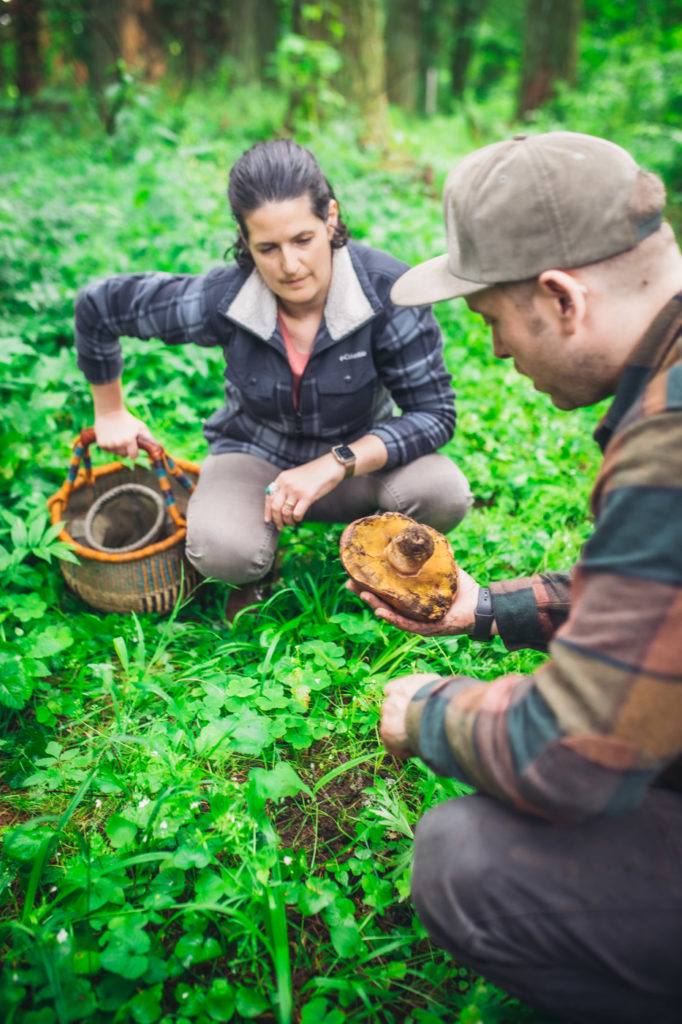
Holl generally forages with only his dog for company, but takes pleasure in sharing the experience of foraging frequently through social media and meals that he prepares for family, friends and Spätzle & Speck guests.
In the spring of 2021, he led a small group of people into the forest for a special feast. On that occasion, Holl was accompanied by chef Bonnie Morales of the Portland-based Russian restaurant Kachka. Speaking of Morales, Holl says, “We have this big connection in our thoughtfulness in sourcing ingredients and the care that goes into that, in being able to showcase an ingredient in its purest form.”
The two came together to create a meal inspired by their shared philosophy as well as their shared environment and, naturally, agreed to let nature determine the menu.
“We didn’t come with a solid plan,” explains Holl. “We brought a few things and then we foraged.”
Together, they gathered porcini mushrooms, tart spring berries and wild wood sorrel. Holl built a fire and warmed some cheese over it to serve with pickled mushrooms and grilled bread. They prepared a carpaccio of shaved porcini, strewn with berry compote and torn wood sorrel.
For the main course, “We made this traditional rabbit dish that was braised with potatoes over coals,” says Holl. Following Russian tradition, Morales served vodka and made a toast to initiate the meal.
Holl describes the spontaneous succession of courses as something that was “so simple in itself, but it very much highlighted everything that was growing in that moment.”
“Bonnie and I, we’re telling this story in our cooking,” says Holl. “That day, we went out into the woods and we told a story of that spring rainy day around the fire.”
It is a story that can never be recreated exactly, but has much to offer in its retelling. For Holl, the beauty of the meal came from “not putting too much pressure on what it could be, just allowing nature to run its path.” Which is, of course, a valuable lesson for all things in life.
“Never knowing what you’re going to have—that’s the true definition of wild,” says Holl. And whether you’re in the weeds (metaphorically speaking) in the truly wild setting that is the pandemic or in the woods (in the most literal sense) in search of mushrooms, you cannot always know what will show up on your path.
As Holl demonstrates, great things can come from setting out into the wild anyway, with the right tools and the willingness to make the most of whatever you find.





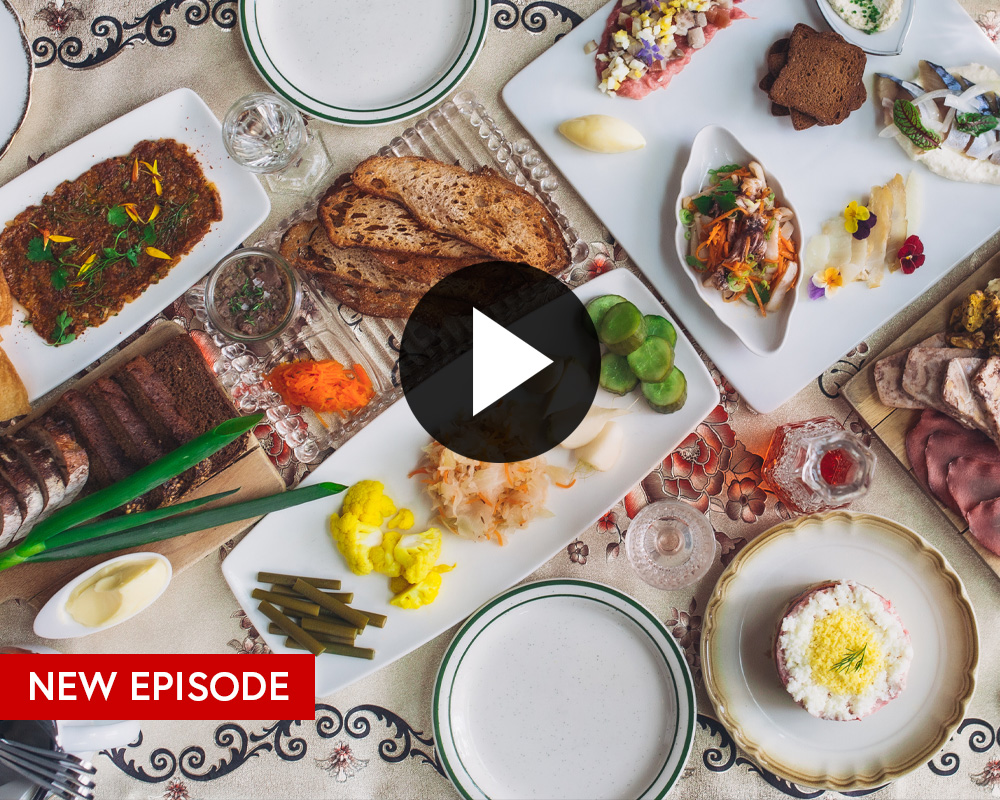

Our comments section is for members only.
Join today to gain exclusive access.